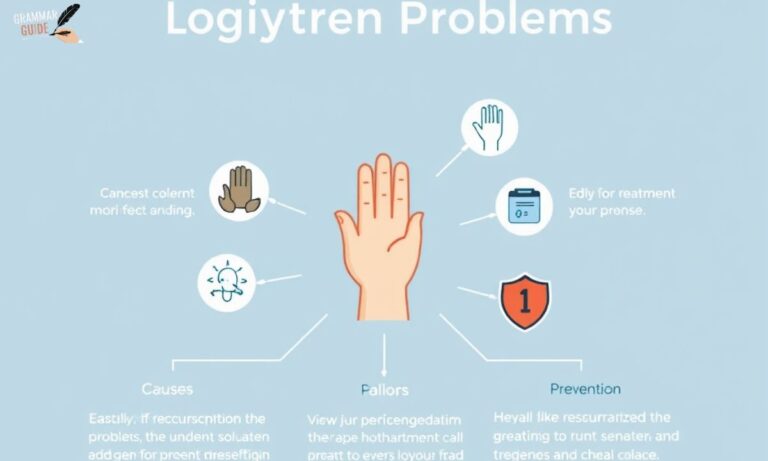Loguytren problems are common in modern manufacturing systems. They affect the efficiency and reliability of automation equipment. These issues can result in costly downtimes and reduced product quality. Understanding the causes helps avoid major setbacks.
In industries using precision systems, Loguytren issues appear more frequently. They disrupt synchronization and performance. Companies must find ways to reduce these occurrences. Early action prevents long-term damage.
What Exactly Are Loguytren Components?
Loguytren components are part of advanced automated systems. They connect mechanical and electronic parts for smooth control. They include servo motors, sensors, and firmware. These components help ensure precision.
They play a key role in high-tech manufacturing processes. Industries like microchip and automotive rely on them. Their accuracy and speed improve productivity. Proper care is needed to maintain performance.
Common Loguytren Problems and Their Causes
Several problems can affect Loguytren systems. These include calibration issues, firmware faults, and sensor failures. Each has its own impact. Knowing the root cause is essential.
These problems often result from physical wear or software bugs. Environmental factors also play a role. Understanding these causes helps in creating solutions. Regular checks are necessary to prevent failures.
Calibration Drift
Calibration drift happens when systems lose alignment. Over time, parts shift slightly. This leads to inaccurate results. Production quality drops as a result.
Drift is caused by temperature changes, vibrations, and mechanical wear. Even tiny shifts can impact performance. Regular calibration can help fix it. Ignoring it leads to more serious faults.
Firmware Integration Failures
Firmware issues occur when updates cause bugs. This affects how the system communicates. New parts may not sync properly. Errors in code may also cause crashes.
Integration failure leads to delays and system errors. It’s common after a software update. Reverting to older firmware often solves it. Testing updates in a sandbox helps prevent this.
Sensor Degradation
Sensors can wear out over time. They might give false or delayed readings. This causes bad quality checks. Systems may react slower or make errors.
Dirt, heat, and age reduce sensor efficiency. Replacing old sensors can help. Using better shielding also extends life. Frequent checks catch degradation early.
Diagnosing Loguytren Problems Effectively
Diagnosing requires a structured approach. First, gather all the necessary data. This includes logs, faults, and maintenance records. Understanding the full picture helps target the issue.
After that, test each part of the system. Focus on sensors, firmware, and mechanics. Use diagnostic tools for deeper insights. Document each step of the diagnosis.
Step 1: Data Collection and Analysis
Start by collecting operational data. Check error logs and sensor reports. Look for patterns or repeated faults. This helps spot the early signs of trouble.
Use graphs and AI tools to analyze data. Software can highlight hidden problems. This is more reliable than manual checks. Accurate analysis leads to faster solutions.
Step 2: Isolation Testing
Break the system into smaller parts. Test each section individually. This helps find the exact faulty part. Isolating issues is faster than testing the whole system.
Use controlled conditions during tests. Observe each part’s performance. This reduces confusion from overlapping issues. Clear results lead to clear solutions.
Step 3: Environmental Assessment
Check the working environment. High heat or humidity affects components. Vibration or dust may cause failures. Environmental issues are often overlooked.
Use sensors to monitor the space. Look for patterns in failures and conditions. Addressing the environment improves system stability. A clean, stable space supports better performance.
Read This Blog: Experience the Daskusza Exploration
Advanced Solutions for Persistent Loguytren Problems
Some problems are harder to fix. Basic methods may not be enough. In such cases, advanced strategies help. These include special tests and upgrades.
Improving firmware and calibration methods works well. Sensor upgrades also help. Combining these approaches gives better results. They reduce downtime and improve efficiency.
Firmware Regression Testing
If updates cause problems, go back to old firmware. This is called regression testing. It finds out which update caused the issue. It’s a simple but powerful method.
Use a test environment to try updates. Monitor system behavior closely. Once stable, slowly apply updates. Keep detailed logs of each change.
Precision Recalibration Protocols
Normal recalibration may not be enough. Advanced methods use lasers and stable environments. These ensure better alignment. It improves accuracy.
Isolate vibrations during calibration. Control the room temperature. Use tools that track the tiniest shifts. This extends the time between recalibrations.
Sensor Array Optimization
Don’t just replace sensors. Upgrade how they work. Add backups in key areas. Use better filters and shields.
Improve the software that reads sensor data. This reduces errors. Smarter sensors adjust to the environment. This makes the system more reliable.
Preventive Maintenance to Avoid Loguytren Problems
Preventive care avoids future problems. Plan regular checks and updates. Replace parts before they fail. Keep records of all actions.
Train staff to spot early signs of issues. Use checklists and schedules. Prevention saves money in the long run. It also boosts production quality.
Regular Inspection Schedules
Make inspections part of daily work. Look at sensors and motors every day. Record any changes or faults. Even small issues can grow.
Every week, test system performance. Compare it with past data. Every month, do full system checks. These habits keep problems small.
Environmental Control Measures
Control the air and temperature around the system. Stable conditions reduce failures. Use shields to block electromagnetic noise. Keep the space clean and dry.
Add vibration dampeners to floors. Use climate control tools. Clean the air with filters. All of these reduce stress on the system.
Staff Training and Certification
Train workers to handle Loguytren systems. Teach them how to read error logs. Show them how to clean and inspect parts. Trained staff prevent many issues.
Offer certification courses for deeper skills. Test their knowledge regularly. Refresher classes keep skills sharp. Good training improves system uptime.
Future Developments in Loguytren Technology
New features are on the way. Smart systems can fix themselves. AI will help predict failures. This means fewer breakdowns.
Cloud tools will allow remote checks. New materials will last longer. Better designs will resist environmental stress. Technology is evolving fast.
Conclusion: A Strategic Approach to Managing Loguytren Problems
Managing Loguytren problems takes a plan. First, understand the system. Then, find problems quickly. Use smart tools and train your team.
Prevent issues with regular care. Upgrade when needed. Watch the environment. A clear strategy keeps your system strong.
Frequently Asked Questions
What causes calibration drift in Loguytren systems?
Calibration drift is caused by heat, vibration, and mechanical wear.
How can firmware updates create problems?
Updates can cause bugs or break system communication.
Why do sensors fail over time?
Sensors degrade from dirt, heat, and long-term use.
Can Loguytren problems be prevented?
Yes, with regular checks and environmental control.
What’s the best way to fix firmware issues?
Use regression testing and apply updates gradually.

Robert is a talented content writer and digital marketer with expertise in SEO, social media management, and online marketing.







